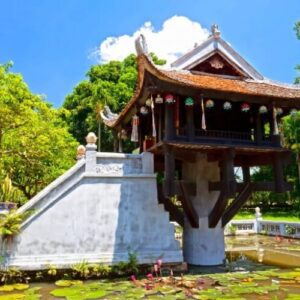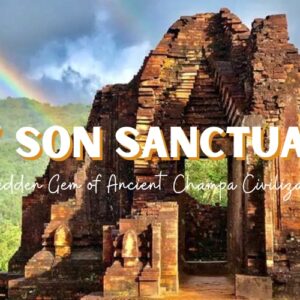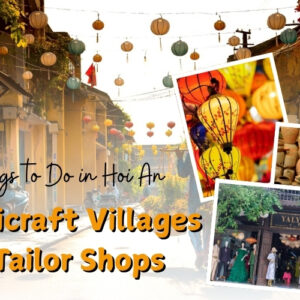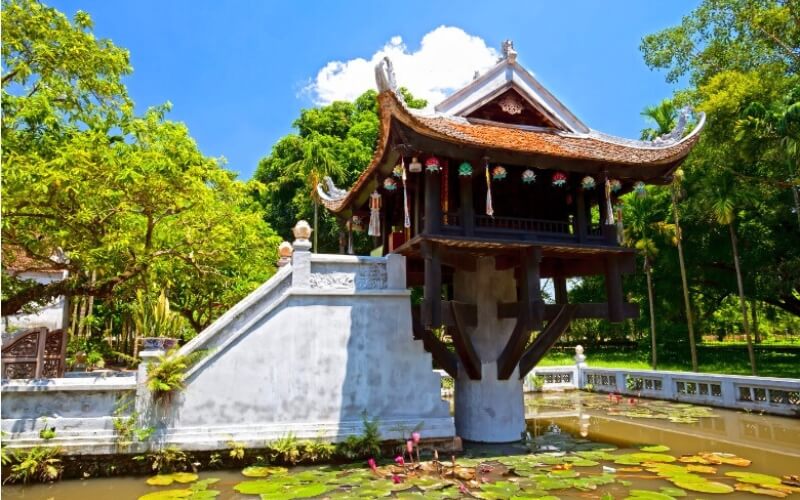
The One-pillar Pagoda or Dien Huu Pagoda earned its name from a unique architect, the pagoda is supported by a single pillar. Located next to Ho Chi Minh Mausoleum, in the center of Hanoi – Vietnam’s capital city, it is a destination you shouldn’t miss when come to visit Hanoi. In 2012, the Asian Records Organization honored the pagoda as “The temple with unique architecture in Asia”, acknowledging its unique design and the value of the pagoda to the country.
It is quite easy to travel to the pagoda, even now as a tourist attraction, there is still a calm and peaceful atmosphere here that will give you some time to relax from the busy hustle of life in Hanoi.
Essential Tourist Information about the One Pillar Pagoda
- Opening Hours: From 8 am to 5 pm every day
- Entrance Fee: The pagoda opens freely to everyone.
- Dress Code: Like many religious sites, you need to dress properly when visiting the One Pillar Pagoda, which means you need to cover your shoulder and your knees, if you are coming in the summer, bringing a sarong can be a great idea to put on when coming in and take off after your visit. There is no one to check but still, it is polite to respect the culture.

One Pillar Pagoda – Hanoi
Story of the One Pillar Pagoda
One Pillar Pagoda was built under Ly’s dynasty in 1049. The legend goes that one night in 1049, King Ly Thai Tong dreamed of the Bodhisattva Avalokiteśvara (Phat Ba Quan Am) sitting on a lotus and leading him to a temple in the shape of a lotus. When he woke up, he was advised by Thien Tue monk to build the pillar-based pagoda-like in his dream and top it with the lotus of the Buddhist Goddess. The pagoda was later extended by King Ly Nhan Tong in 1105. He also added the Linh Chieu bond.
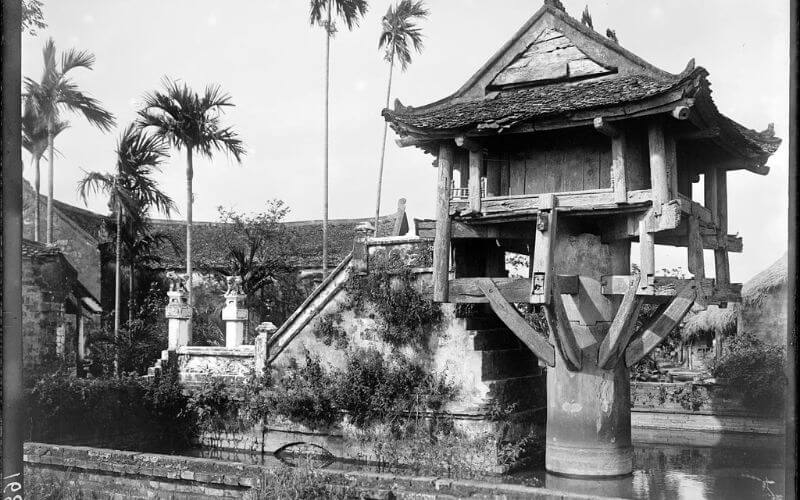
One Pillar Pagoda in 1896
The word “Dien Huu” in the old language means “long-lasting happiness”. Originally, Dien Huu Pagoda is a complex with many architectural items, including the One-pillar. Due to historical events, the war of many dynasties and later on, the French war and American wars nearly destroyed the Pagoda. What we see now is the restoration of what was left of the Nguyen dynasty.
There’s a bodhi tree near the pagoda, which is a gift from Rajendra Prasad-Indian president to Ho Chi Minh President.
Every year, on April 8th in the Lunar calendar, the King comes to the pagoda for the Buddha bathing ceremony and releases a bird back to the sky. Even now, on the same day, the most important people in the government of Vietnam still come and proceed with the ceremony like the old kings used to.
Architectural Highlights of the One-Pillar Pagoda
The shrine was made of wood and supported by a stone pillar 4 meters high and a diameter of 1.2 meters. The wooden structure is 3×3 meters in size. On top of the pagoda are 4 curved roofs, each has a dragon head shape. The roofs are covered with traditional red and mossy tiles. On top is the image of 2 dragons sleeping on the moon, a symbol of harmony and bringing protection to the sacred temple.
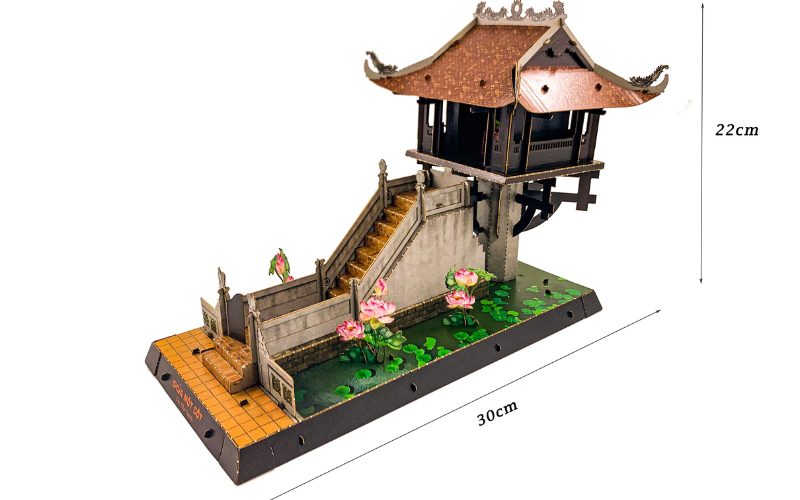
Structure of One Pillar Pagoda
On the campus of the pagoda, there are 3 gates with vertical craved 3 words “Dien Huu Tu, “It used to be a part of the old Dien Huu Pagoda but was destroyed and restored by the government. They have made it a part of the One-pillar now as a place for Buddhists, and monks to perform religious activities and make it an attraction of the city.
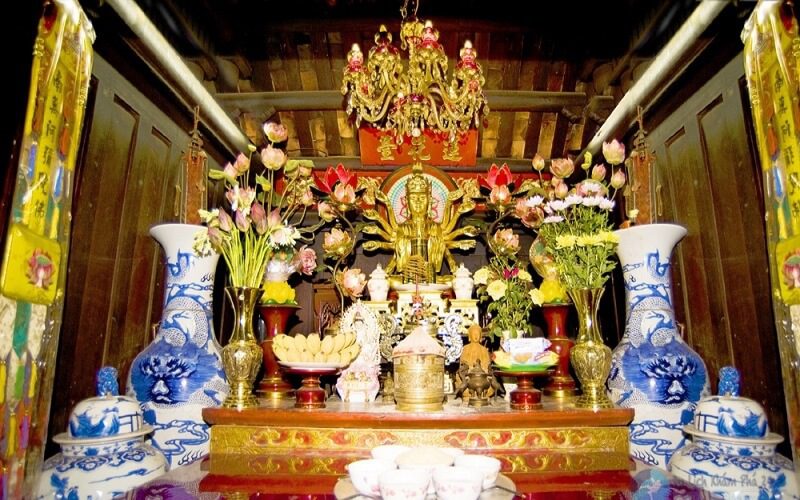
Inside One Pillar Pagoda
Coming up to the main wooden shrine, you will go through 13 staircases widths of about 1.4 meters, exactly the same. The staircases still retain the architecture from the Ly Dynasty. The main hall is for worshiping Avalokiteśvara Bodhisattva, there is a large altar with the yellow Buddha statue sitting on a wooden lotus.
Attractions around The One-Pillar Pagoda
Ho Chi Minh Mausoleum
Ho Chi Minh Mausoleum was built over 2 years from 1973 to 1975, this building was the result of collaboration between Vietnam and Xo Viet Union engineers. The mausoleum has 3 floors and the second floor is the heart of it. This is where the remains of President Ho are kept in a chamber, accessible through a lot of passages and marble stairs. The Mausoleum is free for visiting, but you need to remember to dress politely, no short skirts, tank tops, or hats, phones, and cameras are also not allowed inside the Mausoleum, you will need to leave them outside. During the visit, visitors need to walk slowly and quietly in 2 lines.
- Opening hours: 7:30 am – 10:30 am on Monday, Tuesday, Wednesday, Thursday, Saturday, and Sunday.
- Every Monday and Friday from June 15th to August 15th is closed for maintenance.
- Entrance fee: Free
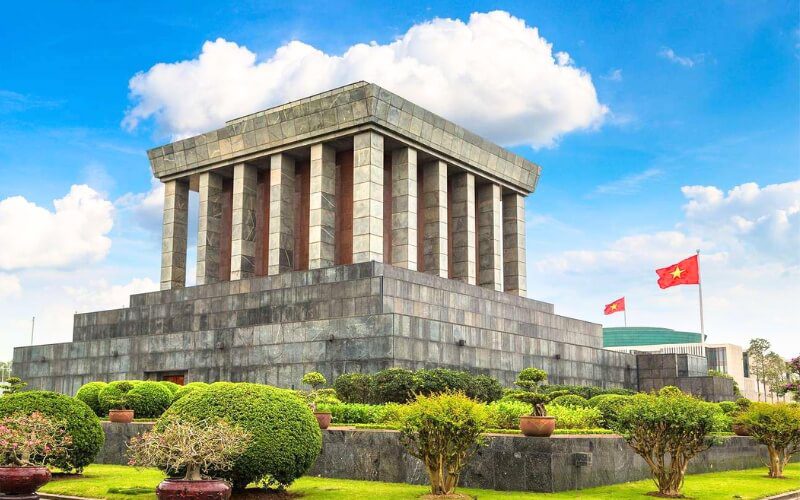
Ho Chi Minh Mausoleum
Ba Dinh Square – Next to the One Pillar Pagoda
Ba Dinh means “Three Communal House.” Originally was the name of a village in Thanh Hoa province, where the first revolution against French colonialists took place. Vietnam’s largest square is 320 meters in length, and 100 meters in width and has a capacity of 20 thousand people and a flag tower 29 meters high. The square is where many historical events in Vietnam took place. Today, it is the location for many national meetings, and the annual military parade celebrating Vietnam’s Independence Day. Every day there are flag-raising and lowering ceremonies solemnly take place under the formal national rites.
- Opening hours: 5:00 am – 10:00 pm every day
- Entrance fee: Free
Ho Chi Minh Museum
The museum was inaugurated on May 19th, 1990 on the birthday of the late President Ho. Taken the shape of a white lotus, nearly 20 meters high, including 3 floors. The first floor is a hall of 400 seats and usually hosts national and international meetings, conferences, and scientific seminars. The main exhibition of the museum is on the second floor, covering approximately 4000 square meters. Here kept more than 2000 documents, and show-pieces reflecting the life of the Ho Chi Minh President and the stages of the Vietnam Revolution since the late 19th century.
- Opening hours: 8:00 am – 12:00 pm and 14:00 pm – 16:30 pm on Tuesday, Wednesday, Thursday, Saturday, and Sunday
- Entrance fee: 25,000VND per person
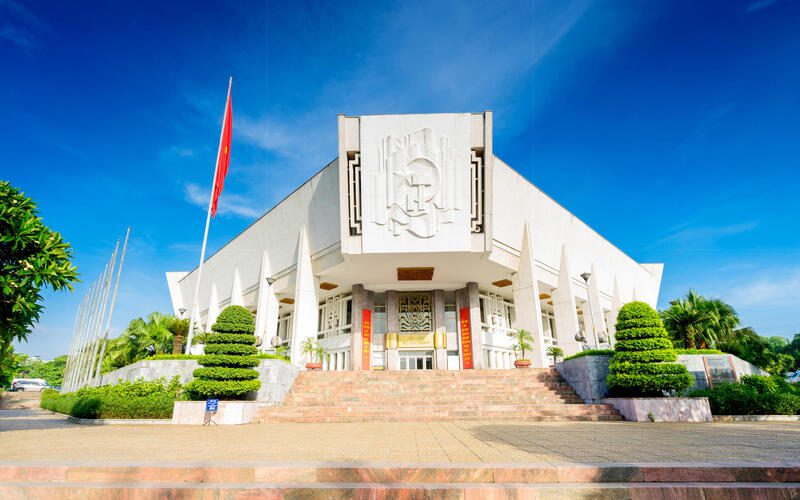
Ho Chi Minh Museum
Ho Chi Minh Mausoleum, Ba Dinh Square, and Ho Chi Minh Museum are all within walking distance from the One Pillar Pagoda.
Thang Long Imperial Citadel
Dated back to the 7th Century, the citadel has witnessed many changes in Vietnam through many periods and dynasties of former kings. Became the center of political power in 1010 when King Ly Thai To moved the capital to Dai La (the old name of Hanoi), it has been the center of power in Vietnam for 13 centuries. The exhibits here represent over 1000 years of the history of Vietnam, there are ceramics, cravings, tools, and many different crafts preserving the artistic and historical legacy of the nation.
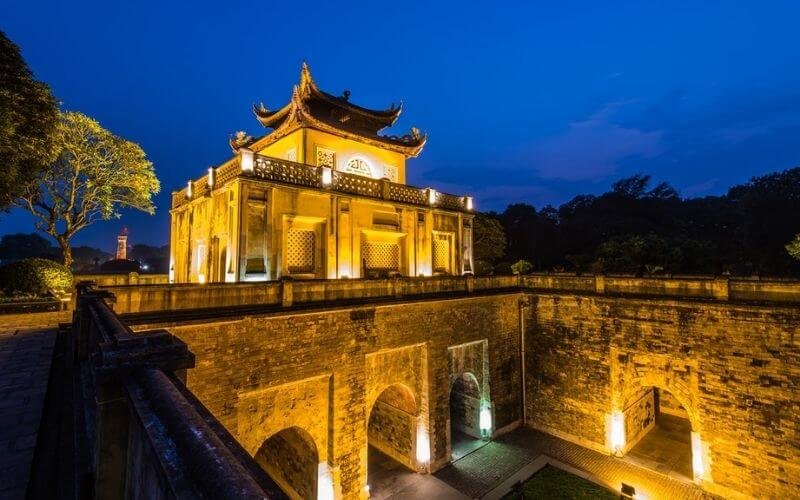
Thang Long Imperial Citadel
Dress politely is required when visiting.
- Opening hours: 8:00 am – 5:00 pm; Closed on Monday
- Entrance fee: 30,000 VND/person
Temple of Literature
Also known as “Van Mieu Quoc Tu Giam”, it is the first university in Vietnam, built-in 1070 by King Ly Thanh Tong. The structures are restored and kept the same as they used to be in the past. Here you can discover ancient construction dating back to the Ly and Tran dynasties. such as the Khue Van Pavilion, an icon of Hanoi, and the system of 82 stone steals on the turtles’ backs, which inscribe names, places of birth, and achievements who passed the exams from 1442 to 1779. Coming to Hanoi early in the year (on the first days of the Lunar New Year will be the best) or in early/mid-summer, when there are many important exams taking place, you will see many students coming here to pray for good results in their tests and achieve what they desire.
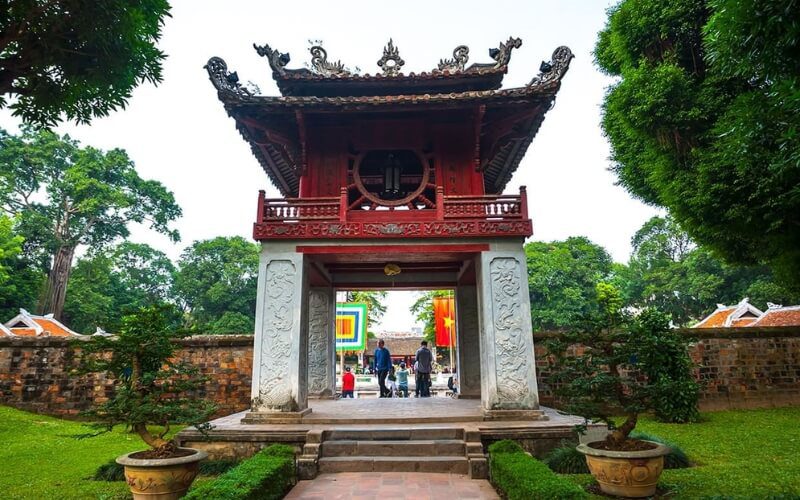
Temple of Literature
Dress politely is required when visiting.
- Opening hours: 8:00 am – 6:00 pm
- Entrance fee: 30,000 VND/person
Vietnam National History Museum
Founded in 1958, Vietnam National History Museum has more than 7000 exhibits showing the progress of development in Vietnam throughout its history from the early days to the August Revolution in 1945. The second floor was equipped with internet computers allowing visitors to find and read information about the exhibits easier.
- Opening Hours: 8:00 an-12:00 pm & 1:30 – 5:00 pm except Monday
- Entrance Fee: 20,000 VND/person
How to Get to the One-Pillar Pagoda and/from Nearby Attractions
It is easy to get to One-pillar Pagoda because it is situated in the center of the city, there are many ways to get there, keep in mind to avoid traveling between 7:30-9:30 am as there might be traffic jams. It is about 3.5 km away from the Old Quarter (where most tourists would choose to stay) so there are many transport options that you can choose from. At such a convenient position, traveling around the pagoda and other attractions is very easy too. You can either travel on a tour with a completed timeline from the travel agent or travel around as you wish with any transport that is suitable for you.
By Taxi
This is the easiest and maybe the most convenient way, you can find a taxi everywhere in Hanoi, and it would normally cost around 4 USD.
By motorcycle taxi
This will be cheaper and maybe faster too. There are many mobile apps to book a bike to any destination in Vietnam, consider having one (or a few) on your phone when coming to Vietnam. The routes from the One Pillar Pagoda to the nearby attractions are rather small and sometimes cars might get stuck in there, so taking a motor ride may be a better option. The downside may be that some drivers might seem careless and if you are traveling in the summer or in the rainy months, you won’t have many protections from the weather as in a car. Depending on where you’re staying, it can cost around 2 to 3 USD.
By cyclo
This “bicycle taxi” is what used to be very popular during the colonization time and it can be a cool way to travel around Hanoi. Mostly these “taxis” appear in the Old Quarter and serve mainly to tourists, make sure to negotiate with the driver before hopping on for the best price.
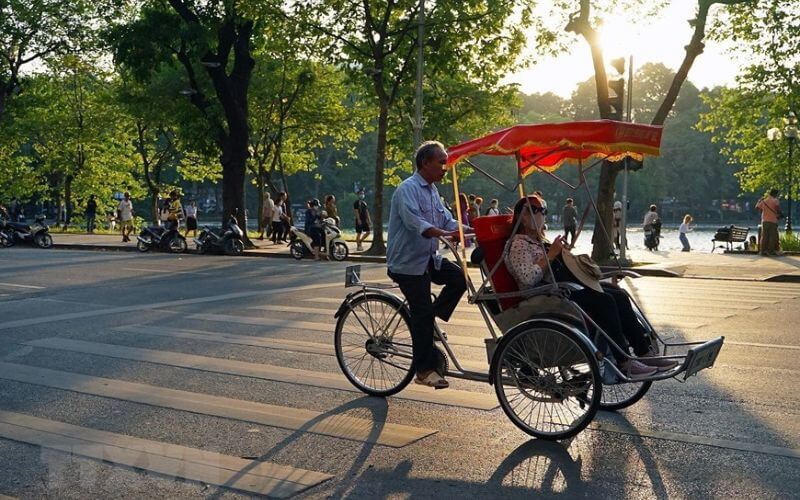
Cyclo Taxi in Hanoi
By bus
A public transport, why not? They can be found on most streets in Hanoi, and they always come to the station 15 minutes after each one, so you won’t need to worry if you missed one. Each ticket is less than 1 USD.
By Hanoi Double Decker Bus
Now there are double-decker buses to take tourists around the city, starting from the Grand Theater of Hanoi to many different attractions in the city, with a travel guide accompanying each bus. You can learn about the famous attractions while taking photos of the busy streets or the poetic views on the route. It cost around 7 to 8 USD per person.
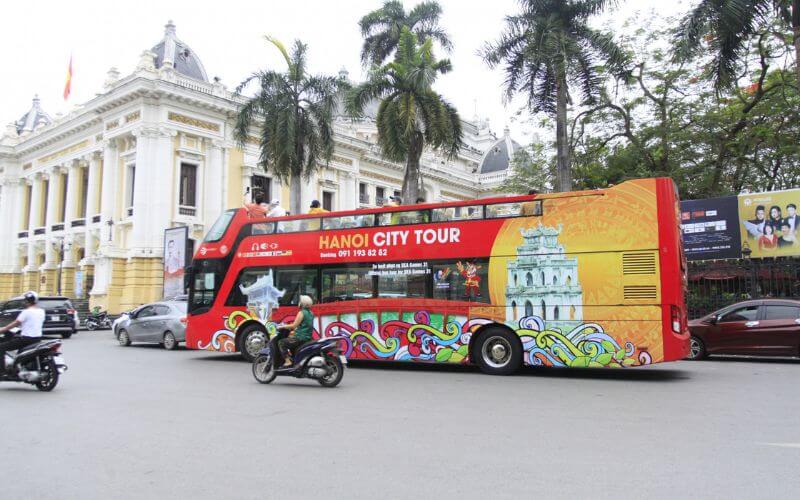
Hanoi Double Decker Bus
By Private Transport
You can rent a motorbike or a bicycle to travel around Hanoi, just ask about your accommodation, some are available for rent instantly, but some may need to go through another party, it can be more costly than taking a bus or a motor taxi, but it will be cooler to explore the city on your own. IDC Travel also offers a private car service with a personal driver.
Above is some information for you before your visit to the One-pillar Pagoda, we hope that it will help you to prepare for your visit better. Don’t hesitate to contact us and prepare for your trip to Hanoi.
